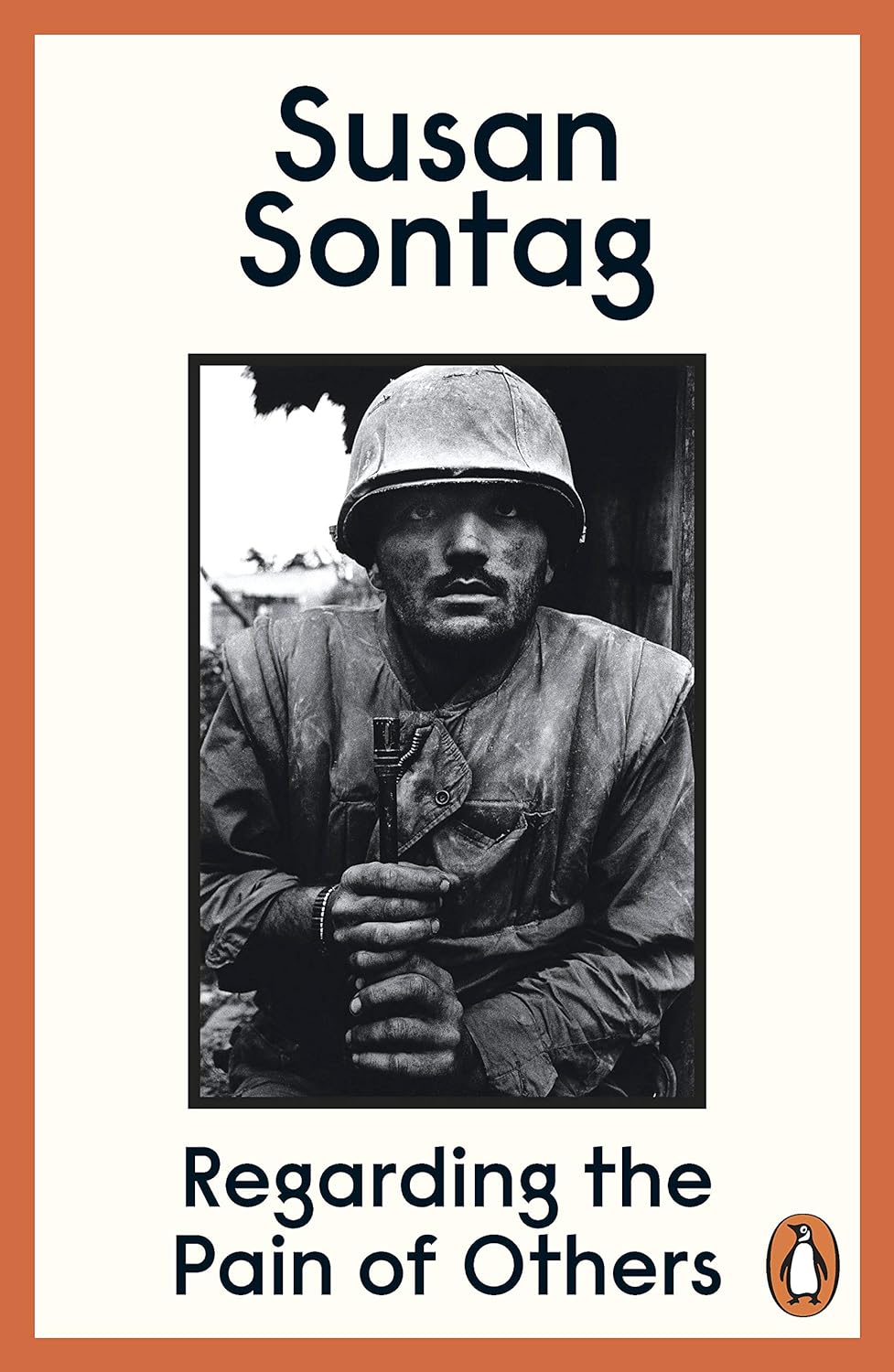Introduction: “Regarding the Pain of Others” by Susan Sontag, published in 2003, is a profound and thought-provoking exploration of how we perceive, interpret, and respond to images of suffering, particularly those depicting war and violence. Sontag, a renowned cultural critic, delves into the ethical, psychological, and political dimensions of viewing such images, questioning the impact they have on viewers and society at large.
1. The Power of Images
Impact of Visual Representation:
- Sontag examines the powerful role that photographs play in shaping public perception of war and suffering. She argues that images have the ability to evoke strong emotional reactions, influence public opinion, and even mobilize political action.
- However, Sontag also questions whether repeated exposure to images of suffering leads to compassion fatigue, where viewers become desensitized to the pain of others.
Historical Context:
- The book provides a historical overview of war photography, tracing its evolution from early conflicts like the Crimean War to contemporary coverage of global conflicts.
- Sontag discusses iconic war photographs and their impact on public consciousness, such as the works of Robert Capa, Don McCullin, and the haunting images from Abu Ghraib.
2. Ethics of Viewing
Moral Responsibility:
- A central theme in Sontag’s analysis is the moral responsibility of viewers when confronted with images of suffering. She questions what it means to witness suffering from a distance and whether viewing such images obligates us to take action.
- Sontag explores the tension between the voyeuristic aspect of viewing pain and the ethical imperative to bear witness to atrocities.
The Role of Photographers:
- The ethical responsibilities of photographers are also examined. Sontag discusses the dilemmas faced by photojournalists who document suffering and the fine line between capturing important truths and exploiting their subjects.
- She emphasizes the importance of context in understanding photographs, arguing that without proper context, images can be misleading or misunderstood.
3. Representation and Reality
The Nature of Photographic Truth:
- Sontag delves into the complex relationship between photography and truth, highlighting how photographs can both reveal and obscure reality. She argues that while photographs capture moments of truth, they are also selective and subjective, influenced by the photographer’s choices.
- The book challenges the notion of photographs as unbiased records of reality, emphasizing their constructed nature and the influence of framing, composition, and context.
Staged and Manipulated Images:
- The issue of authenticity in war photography is critically analyzed. Sontag discusses instances where images have been staged or manipulated to create a particular narrative, questioning the ethical implications of such practices.
- She examines how the line between documentary and art can blur, affecting the credibility and impact of photographic evidence.
4. The Spectacle of Suffering
Images as Spectacle:
- Sontag critiques the spectacle of suffering created by mass media, where images of pain and violence are consumed as entertainment. She argues that this commodification of suffering can lead to a superficial engagement with serious issues.
- The book explores the desensitizing effect of constant exposure to graphic images, questioning whether viewers can maintain empathy and moral outrage in the face of endless visual bombardment.
Public Reaction:
- The varying reactions of the public to images of suffering are examined, from outrage and activism to apathy and indifference. Sontag discusses how cultural, social, and political factors influence these responses.
- She also considers the role of censorship and the ethical implications of showing graphic images, debating whether such images are necessary to convey the horror of war or if they contribute to further dehumanization.
5. Memory and Representation
Photography and Memory:
- The relationship between photography and memory is a key theme. Sontag discusses how photographs serve as both aids to and substitutes for memory, shaping our collective understanding of historical events.
- She examines the role of iconic images in creating lasting impressions of conflicts, arguing that they often come to symbolize entire wars or atrocities, influencing how these events are remembered.
Selective Memory:
- The book addresses the issue of selective memory, where certain images and narratives are highlighted while others are ignored or forgotten. Sontag explores how power dynamics influence which images are seen and remembered.
- She questions the impact of this selective representation on our understanding of history and the potential for photographs to both illuminate and distort reality.
6. War, Gender, and Representation
Gendered Perceptions:
- Sontag explores the gendered dimensions of war photography, analyzing how images of suffering are often framed differently depending on the gender of the subjects. She discusses the portrayal of women and children in war images and the implications of these portrayals.
- The book critiques the often passive and victimized representations of women in war photography, arguing for a more nuanced and empowering depiction.
The Female Perspective:
- The contributions of female photographers and their unique perspectives on war and suffering are highlighted. Sontag discusses how women behind the camera have challenged traditional narratives and offered alternative views of conflict.
- She emphasizes the importance of diverse voices in documenting and interpreting war, advocating for a broader representation of experiences and perspectives.
Conclusion
“Regarding the Pain of Others” by Susan Sontag is a profound exploration of the complex relationship between photography, suffering, and public perception. Through a critical analysis of the power and ethics of viewing images of pain, Sontag challenges readers to reflect on their own responses and responsibilities as spectators. The book delves into the historical, cultural, and gendered dimensions of war photography, questioning the authenticity, impact, and ethical implications of visual representations of suffering. Sontag’s work remains a crucial contribution to the discourse on photography and its role in shaping our understanding of the world.
Additional Resources:
For more in-depth reviews and insights, you may refer to the following links:

